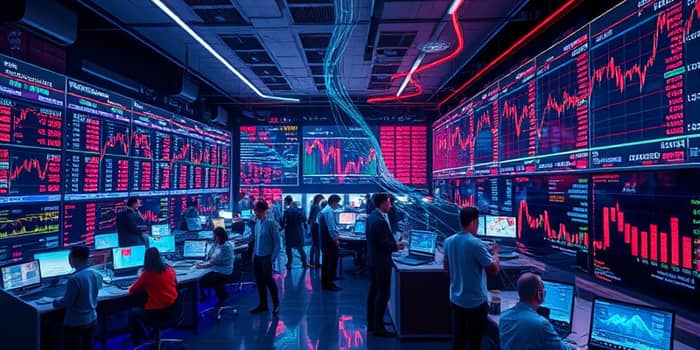
Algorithmic trading stands at the forefront of a financial revolution, transforming the way markets operate and how traders make decisions. This evolution, driven by speed, data, and innovation, has ushered in an era where computers execute orders with precision and agility, reshaping global market structures.
From institutional giants to ambitious retail participants, the allure of algorithmic strategies lies in their ability to process massive datasets and respond to market fluctuations in real time. As this technology matures, understanding its potential and pitfalls becomes crucial for anyone seeking to navigate modern finance.
The trajectory of algorithmic trading is nothing short of remarkable. Industry estimates for the global market value in 2024 range from USD 20.1 billion to USD 51.14 billion, reflecting diverse methodologies and source data. Projections for 2025 similarly vary between USD 18.73 billion and USD 57.65 billion, underscoring rapid expansion fueled by heightened demand for automated systems.
Looking further ahead, forecasts anticipate the market reaching USD 42.99 billion by 2030 at a CAGR of 12.9%, and potentially soaring to USD 150.36 billion by 2033 at a CAGR of 12.73%. These figures not only illustrate robust growth but also signal transformative shifts in capital allocation and talent investment.
North America leads the global landscape, commanding a 33.6% revenue share in 2024 and nearly 39.7% in 2025. This dominance stems from advanced infrastructure, deep liquidity pools, and a regulatory environment conducive to innovation. Yet emerging regions are closing the gap, setting the stage for a truly global ecosystem.
At the heart of algorithmic trading lies a convergence of cutting-edge technologies. From artificial intelligence to blockchain, these innovations have fundamentally altered how strategies are conceived, tested, and deployed.
These advances empower market participants with unprecedented speed and insight. Real-time data ingestion, adaptive machine learning models, and automated risk checks combine to form automated decision-making processes once reserved for top-tier institutions.
Geographic variation in algorithmic trading reflects local market maturity, regulatory frameworks, and technological adoption. While North America retains its lead, Europe and Asia Pacific are emerging as powerful contributors to the next phase of expansion.
In Europe, regulators such as ESMA prioritize market fairness and data transparency, encouraging firms to adopt robust compliance measures. Meanwhile, Asia Pacific—led by China and India—experiences surging investments in fintech infrastructure and algorithmic platforms.
These regional distinctions create a dynamic mosaic of opportunities and challenges. Global firms must adapt strategies to local conditions, balancing central risk controls with market-specific nuances.
With great power comes significant responsibility. As algorithmic trading proliferates, so do concerns around market stability, cybersecurity, and ethical conduct.
Proactive risk management combines automated checks with human oversight. Firms implement pre-trade simulations, live market monitoring, and regular audits to ensure algorithms behave as intended under varied conditions.
From order execution to portfolio management, algorithmic methods cover a spectrum of financial strategies. Adopting the right approach depends on capital, risk appetite, and technological resources.
For traders and firms looking to get started, consider these practical steps:
By following a structured approach and focusing on risk controls, practitioners can harness algorithmic power while minimizing unintended consequences.
The rise of algorithmic trading has reduced barriers for retail participants, offering access to sophisticated tools once reserved for large institutions. This democratization reshapes how markets function and how value is created.
Employment landscapes are shifting, with growing demand for quant researchers, data scientists, and AI specialists. Educational institutions and online platforms now offer specialized programs, preparing the next generation of financial technologists.
Ethical debates continue around market manipulation, flash crashes, and the displacement of traditional trading roles. Policymakers and industry leaders must collaborate to foster responsible innovation, balancing growth with stability.
Looking ahead, the integration of cutting-edge cloud computing architectures, advanced AI models, and enhanced regulatory tools will drive the next wave of algorithmic evolution. Retail platforms will become more intuitive, institutional systems more powerful, and markets more interconnected.
For those inspired by this transformation, the path forward begins with education, experimentation, and community. Join forums, contribute to open-source projects, and engage with peers to exchange insights and best practices.
Algorithmic trading is not merely a technological trend—it represents a fundamental shift in market dynamics. By embracing innovation responsibly and cultivating a mindset of continuous learning, traders and institutions alike can thrive in this new era of finance.
Embark on your algorithmic journey today: study the data, refine your strategies, and contribute to a future where technology and human ingenuity coalesce to shape resilient, efficient markets.
References













